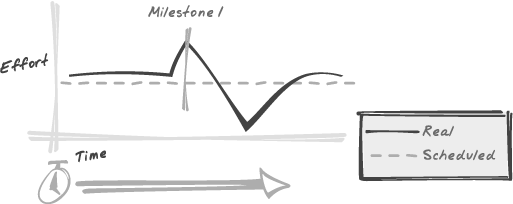Chapter 15. End-game strategy
Continuing from last chapter’s coverage of mid-game strategy, this chapter will emphasize hitting dates and deadlines, as well as what tools to use for driving projects to finish on time.
It’s easy to forget, but all projects have more than one deadline. There are always interim dates that lead up to the milestone or end-of-project dates. This means that if your team makes an extraordinary effort to successfully meet a deadline, and another deadline waits on the horizon, there are hidden risks in pushing the team too hard to meet the first one. If a tremendous effort is required to meet that first date, and the team starts on the next one exhausted, stressed, and frustrated, the probability of overall success declines. Vince Lombardi once said that fatigue makes cowards of us all. When we’re exhausted, no amount of caffeine can make us the same people we are under better circumstances.
“How you play a note is just as important as what the note is.”
—Henry Kaiser
When a team is pushed very hard, it will take days or weeks to recover to the same level of performance predicted in the team’s work estimates (see Figure 15-1). Worse, the more often a team is pushed in this way, the less responsive it will be—burnout is the point at which recovery is no longer possible in a useful timeline.

Figure 15-1. You pay a price for crashing to hit a date in the probability ...
Get Making Things Happen now with the O’Reilly learning platform.
O’Reilly members experience books, live events, courses curated by job role, and more from O’Reilly and nearly 200 top publishers.

